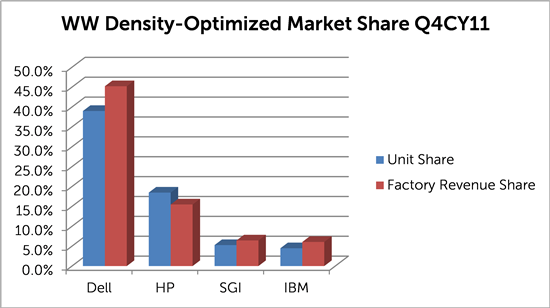By Lisa Wirthman, Contributor
With undulating tails and soft squishy bodies, a new generation of biomimetic ocean robots modeled after fish, manta rays, and jellyfish offer new hope for protecting the health of marine environments.
Without major changes, more than half of all marine species are at risk of extinction by 2100, the United Nations reports. One of the biggest challenges is how difficult it is for humans to monitor the vast underwater realms of the world’s oceans, which account for more than 90 percent of the planet’s habitable space. Until recently, ocean robots haven’t fared much better than scuba divers: Radio waves don’t travel well in water, electric motors create clumsy movement, and robots that rely on jet propulsion and propellers for movement can scare away fish and damage delicate reefs.
“There’s been a lot of technological progress in the world of nature filmmaking, but it can still be very hard to document sea animals up close without disturbing them.”
—Daniela Rus, director, Computer Science and Artificial Intelligence Laboratory at MIT
“There’s been a lot of technological progress in the world of nature filmmaking, but it can still be very hard to document sea animals up close without disturbing them,” says Daniela Rus, director of the Computer Science and Artificial Intelligence Laboratory (CSAIL) at MIT. “We wondered whether it might be possible to develop a robot that was small, agile, and lightweight enough to swim underwater autonomously in the ocean alongside marine animals.”
By combining artificial intelligence (AI), soft robotics, and biomimetic design (mimicking biological behavior), scientists like Rus are creating next-generation ocean robots that offer new promise for monitoring marine life and their ocean habitats for conservation research and biodiversity management.
A Softer Touch
Rus and her team at CSAIL’s Distributed Robotics Laboratory are exploring the development of soft robots. They have developed a soft robotic fish called SoFi that they say is the most advanced of its kind. Ocean robots of all types can travel into marine depths and other environments hazardous to humans. But soft robots have the potential to be safer and more efficient for certain tasks than their hard-bodied counterparts, explains Rus.
Hard-bodied robots have more difficulty moving in confined spaces, use less realistic movements that may scare away animals when used for observation, and can potentially injure both human workers and natural environments. In the case of SoFi, the soft robot can bend and flex, which enables real fish to change direction quickly when swimming. That type of realistic movement is not possible with a rigid-body robot, Rus explained in a MIT newsletter.
Images by Joseph DelPreto, MIT CSAIL
In addition, while traditional robots have to be precisely programmed to avoid collisions, soft robots can easily overcome collisions and actually use the information about their surroundings to plan more efficient movements.
“Robots made out of soft materials like silicone hold a lot of promise for being able to actually interact with humans and in natural environments,” Rus says. “For many tasks they may actually be safer, more resilient, and more efficient.”
SoFi was built with 3D printed parts, has a fish-eye camera, and swims with an undulating tail that allows it to navigate fragile reefs without spooking fish or damaging coral. SoFi can also move forward, up and down, and turn to the side; has a mechanical “swim bladder” for buoyancy; and communicates through acoustic sound that can travel up to 70 feet.
“Methods such as Wi-Fi or Bluetooth don’t work well underwater, so we chose to use sound instead,” says Rus. Her team modified a Super Nintendo controller that uses ultrasonic acoustic pulses to control SoFi’s speed, heading, and video camera so it can travel through complex underwater environments.
SoFi’s soft wiggly tail is made of silicone elastomer, a rubber-like material. It’s powered by a motor that pumps water into two balloon-like chambers in the tail that work like a pair of pistons in an engine to cycle water back and forth. “By repeating many times, these alternating actions create a side-to-side motion that mimics how real fish move,” explains Rus. So far, SoFi’s disguise is passing the test, with videos showing real fish swimming alongside the robot during test dives near Fiji.
Currently, Rus and her team are working on several updates for the next generation of SoFi, including increasing the speed of the fish by improving its pump system, and tweaking its body and tail design. The team is also enabling SoFi to use AI-enhanced computer vision to identify and track real fish. In the future, SoFi will be able to leverage pre-recorded maps of coral reefs to self-locate and navigate autonomously without commands from a human diver, Rus notes.
Rus plans to build multiple SoFis that can travel en masse to see how additional robots impact the behavior of schools of fish. In addition to filming marine life, groups of SoFi record sensor data and take water samples to monitor pollution in underwater habitats. “Using SoFi to create this type of underwater observatory could help further our understanding of mysterious oceanic worlds,” says Rus.
Inspired by Evolution
Other researchers are finding their own inspirations from nature’s biological designs: The National University of Singapore created a MantaDroid with a flexible fin that enables greater speed and agility in the water. Researchers say it can be used in ocean surveillance, including search and rescue operations. Scientists in Italy have also created a soft octopus robot that can grasp, walk, and swim that could be used for ocean exploration or biomedical research.
And researchers at Florida Atlantic University have created a squishy robot jellyfish with soft components for its body and tentacles that can navigate ocean currents and squeeze into small places.
“Scientists are looking at millions of years of evolution to perfect a certain kind of locomotion, actuator, or sensor that is common in biology,” says Dr. Erik Engeberg, a mechanical engineer at Florida Atlantic University. His team’s soft robot jellyfish was developed to help monitor the health of fragile coral reef ecosystems.
“The jellyfish is actually a highly efficient swimmer,” Engeberg says. “A very small amount of energy is required to travel per unit distance.”
The robot is powered by pumps that use seawater to inflate jellyfish-like tentacles that then create an undulating flapping motion so it can swim. It also has sensors to monitor depth, pressure, and temperature, as well as an optical sensor that can detect ocean health indicators such as how much algae is in the water.
The robot jellyfish primarily operates in an autonomous mode, but does have wireless communication ability for short-range distances, Engeberg says. Newer developments have added 3D movement for greater range of motion as well as upgraded power and sensing capabilities.
Like a real jellyfish, the soft robot is not a fast swimmer, so one application is to harness ocean currents for speedier travel, Engeberg adds. The team is also interested in integrating AI into a future model so it can monitor marine health and refining its power supply so it can be deployed for longer periods of time.
So far, the squishy robot jellyfish can detect the presence of any kind of pollutants or contaminants in the water through sensors, which is especially important near reefs that are adjacent to urban areas like Miami, Engeberg says.
“In the next five years, you are going to see more widespread commercialization of soft robotic technology working its way into the marketplace…there’s a good promise that with the correct stewardship that we can use technology continuously to improve the environment.”
—Dr. Erik Engeberg, mechanical engineer, Florida Atlantic University
While soft robots—and their use in nature observation and exploration—is not new, the technology has exponentially gained in popularity within the research community throughout the last decade. “In the next five years, you are going to see more widespread commercialization of soft robotic technology working its way into the marketplace,” Engeberg says.
Although solving the earth’s environmental challenges can seem overwhelming, Engeberg remains hopeful that ocean technologies like soft robotics and biomimetic design that copy nature can create real and meaningful change. “I think there’s a good promise that with the correct stewardship that we can use technology continuously to improve the environment. I am optimistic that we can make things better.”


